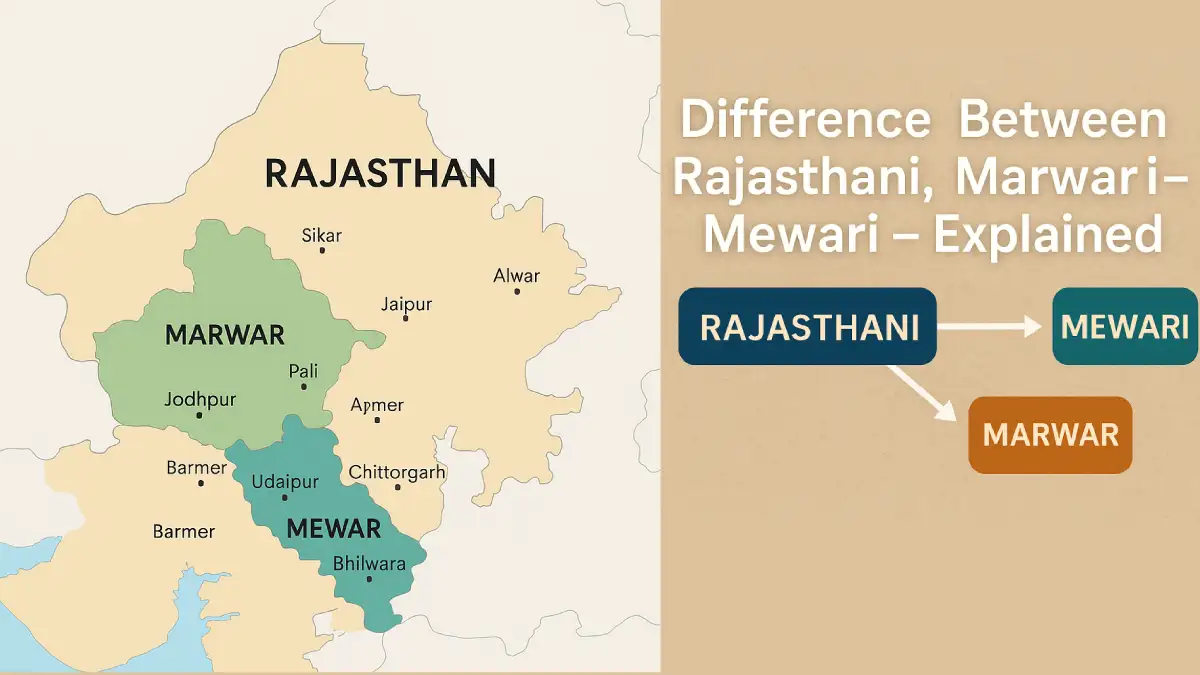Deep in the countryside, in the rocky area of Rajasthan, a very short distance from the busy city of Jodhpur, lies a secret and virtually unknown natural heritage: the Daijar Caves. The caves, located in the arid hills of the village of Daijar, are one of the region’s best-kept secrets. While Jodhpur is known for its hidden palaces, majestic forts, and busy markets, the Daijar Caves offer a totally different experience, one that is fresh, mysterious, and intimately connected with the natural world and the region’s ancient history.
Location and Geography of Daijar
Daijar is a village in the busy city of the Jodhpur district of Rajasthan, India. Located around 18 kilometers northwest of the city of Jodhpur. This location is surrounded by desert shrubland and the surface of rock, typical of the landscape of the Thar Desert. The caves are located within an area of low hills that have been shaped over many centuries by natural processes like wind erosion and thermal fluctuation. The area here is rocky and relatively fresh, presenting a drastic contrast to the urban area of the city of Jodhpur.
The untold Beauty of Daijar
The mysterious beauty of Daijar attracts tourists to this place. The reason why the Daijar Caves are so attractive is that they are mysterious. They are rarely found in guidebooks, and there are no official signs or infrastructure surrounding them. Therefore, the caves are usually visited only by adventurous trekkers, curious locals, or seekers of spirituality. The absence of commercialization has helped maintain the authenticity of the site.
The caves are also known as “secret” since they are not very well known, even to many of Jodhpur’s villagers. The trek to the caves is usually a moderate trek through rocky roads and scrublands, further establishing their hidden and secret nature.
Ancient and Spiritual Importance
Different mythology or localities have their own opinion about Daijar because there is not much documented information related to archaeological work on the Daijar Caves. Local mythology and oral tradition say that the caves have been occupied for centuries, and over 1000 years ago. Some are of the opinion that they used to be the abodes or places of meditation for ascetics and monks who came to the wilderness seeking solitude. Others say that tribal groups occupied these caves as a place of dwelling or to perform spiritual rituals.
The cave architecture is simple, changing into the rock formations. Some of the chambers are naturally occurring, while others might have been carved or enlarged by hand. The inside interiors are dark and cold, a relief from the fearful desert sun. Basic rock platforms indicate they could have been used as resting or meditation areas. There is no more explanation on carvings or writings, which has raised some assumptions that the caves were largely spiritual or functional, but not decorative.
Natural Beauty and Wildlife variety
The landscape around Daijar offers a brilliant texture of natural beauty and is rich in wildlife diversity, quietly thriving amidst the arid terrain of Rajasthan. Far from manicured parks and structured reserves, Daijar’s environment remains raw and authentic. The region surrounding the Daijar Caves is not only historically rich but also ecologically diverse. Scrub forests and rocky outcrops sustain a rich array of desert plants and animals.
During the monsoon period, the otherwise desolate landscape is rejuvenated as hardy desert flora come into bloom, painting the landscape in a kaleidoscope of colors and life. The rains also create temporary water channels and streams through the rocks, enhancing the landscape beauty of the region. The route is fairly free from the crowds, making it perfect for bird-watching, photography, and dreaming.
Bhulbhulaiya (maze) Cave Daijar
The name Bhulbhulaiya itself has a translation of maze or labyrinth, and this cave complex lives up to its name with its narrow, twisting passages and interconnecting chambers. This cave is a secret for maharajas (kings). They used this cave to escape from the war safely if they found it unsafe. In a ‘BHOOLBHULAIYA CAVE,’ there are many ways inside after entering the cave. So, remember to take help from the guide; you can get lost there.
Tourism at the Daijar Caves: A Practical Guide
The Daijar Caves are constantly attracting the attention of adventure seekers, spiritual wanderers, and lovers of unknown nature. Although the Daijar Caves are not a well-known tourist site, it is possible to visit them with a sense of adventure. Here’s a practical guide to visiting:
1. How to Get There: The most convenient method of reaching the Daijar Caves is by hiring a local guide or following GPS coordinates provided by travelers on travel websites. Public transport is not available, and hence, hired taxis or private vehicles are the most convenient mode. The caves are just a short hike away from Daijar village, which itself is around a 20-minute drive from Jodhpur.
2. What to Bring: Travelers should wear hiking boots, bring lots of water, and have sun protection like hats and sunscreen. There are no amenities close to the caves, so it would be good to bring a first-aid kit and snacks.
3. Best Time to Visit: The most suitable time to visit is in the cooler season from October to March. Summers are very hot in Rajasthan, and the trek will become difficult. The best time to go is early morning or late afternoon so that one can avoid the heat and get the best light for clicking pictures.
4. Respect the Site: As the caves are largely untouched and may hold spiritual significance for locals, visitors should refrain from littering, making loud noises, or causing any damage to the natural structures.
Protecting the Hidden Treasure
With the explosion of social media and travel blogging, sites such as the Daijar Caves stand a chance of being inundated and possibly destroyed. Responsible tourism is the best way to maintain the enchantment of such areas. Travelers who stumble upon this secret should feel inclined to share it in moderation, promoting conservation and respect.
Local officials and heritage organizations might eventually realize the importance of Daijar Caves and take steps to safeguard them through official recognition and archaeological exploration. Until that happens, the caves are a secret haven, providing a glimpse into a less frantic, more reflective aspect of Rajasthan.
Conclusion
The Secret Daijar Caves of Jodhpur are not purely a natural wonder; they are a testament to the lasting appeal of nature, intrigue, and solitude. In a state famous for great exhibitions of opulence and history, they represent a counterpoint that is equally as strong. They ask you to go off the grid, to hear the whispers of the desert breeze, and to find a slice of Rajasthan untouched for centuries. For the adventurous and willing, the Daijar Caves offer an experience as rewarding as it is unforgettable.
Just check the visuals of this cave.





